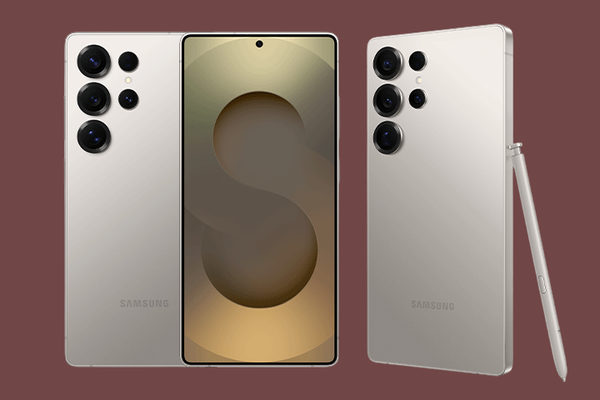The NVIDIA RTX 50 Series
The NVIDIA RTX 50 series doubles the performance of the RTX 40 lineup. Its flagship, the RTX 5090, features 21,760 CUDA cores, 32GB of GDDR7 memory, and 1.52TB/s bandwidth, making it the first GPU capable of 8K gaming with unparalleled speed and graphics quality.

A computer graphics card, also known as a GPU (Graphics Processing Unit), is a critical component of a computer responsible for rendering images, videos, and animations on the display. It processes and accelerates graphical data, ensuring smooth performance for visually intensive tasks like gaming, video editing, 3D rendering, and even AI computations.
How Graphics Cards Work
A graphics card acts as a specialised processor for graphics-related tasks, relieving the CPU from handling these computations. It uses its own Video Random Access Memory (VRAM), cores (CUDA cores in NVIDIA's case), and advanced architectures to perform complex mathematical calculations rapidly. This allows for high-quality visuals, faster frame rates, and efficient multitasking in graphic-intensive environments.
NVIDIA As The Graphics Pioneer
NVIDIA is a global leader in GPU technology, known for its innovative and high-performance graphics cards. Their products cater to a wide range of users, from casual gamers to professionals and researchers. NVIDIA's GeForce series is popular among gamers, offering advanced features like real-time ray tracing for realistic lighting effects and DLSS (Deep Learning Super Sampling) for AI-powered resolution scaling. For professionals, NVIDIA's Quadro and RTX workstation GPUs provide enhanced precision and performance for 3D modeling, animation, and AI workloads.
A hallmark of NVIDIA's technology is its focus on AI integration, exemplified by features like NVIDIA DLSS and Tensor Cores, which enable efficient upscaling and deep learning applications. Their latest RTX 50 series, based on the "Blackwell" architecture, takes graphical performance to new heights with improved ray tracing and DLSS 4 capabilities. In short graphics card delivers the computational power needed for breathtaking visuals, smooth performance, and cutting-edge innovations in gaming, content creation, and beyond. Whether you're a gamer, creator, or AI enthusiast, GPUs are the key to unlocking your system's visual potential.
NVIDIA, a leading name in the world of graphics processing, has consistently pushed the boundaries of visual computing with its cutting-edge GPUs. Over the years, NVIDIA's graphics cards have played a pivotal role in gaming, professional content creation, and AI-powered applications.
History Of NVIDIA Graphics Cards:
NVIDIA's journey in GPU technology began in the late 1990s, revolutionizing how graphics were rendered in games and professional environments. The company's GPUs have since become synonymous with high performance and reliability. Their cards power not only gaming rigs but also workstations for tasks like 3D rendering, video editing, and AI training.
The RTX Family:
There is the GTX family or the budget graphics, however NVIDIA's RTX (Ray Tracing Texel eXtreme) series were introduced with the Turing architecture in 2018, marked a new chapter in GPU technology. The RTX family brought real-time ray tracing to the mainstream, simulating how light interacts with objects in a virtual environment to produce lifelike visuals. This feature helped in even more immersive gaming or 3D rendering experience. Combined with DLSS (Deep Learning Super Sampling), which uses AI to upscale images for higher resolutions and smoother frame rates, the RTX series offers unmatched performance for gamers and creators alike.
From the RTX 20 series to the RTX 50 series, NVIDIA has continually improved its GPUs by introducing advanced architectures, increasing core counts, and enhancing AI capabilities which further solidified NVIDIA's dominance in the GPU market, delivering leaps in performance and efficiency.
RTX 50 Series
The RTX 50 series, powered by the next-generation "Blackwell" architecture, is the latest addition to NVIDIA's GPU lineup. Designed for gamers, content creators, and professionals, this series promises groundbreaking advancements in performance and efficiency.
Some key highlights of the RTX 50 series include:
- Unprecedented Performance: With up to twice the power of the RTX 40 series, these GPUs redefine what's possible in gaming and content creation.
- DLSS 4: The fourth iteration of NVIDIA's AI-driven super sampling technology enables even smoother gameplay and higher resolution visuals.
- Next-Gen Ray Tracing: Enhanced ray tracing capabilities ensure ultra-realistic lighting, reflections, and shadows.
- Compact Design: The Founders Edition cards are slimmer, improving compatibility with smaller PC cases.

Key Features and Specifications
NVIDIA's RTX 50 series represents a significant leap forward in GPU technology. With models like the RTX 5090, RTX 5080, and RTX 5070 Ti, this series is designed to cater to gamers, creators, and professionals seeking unparalleled performance.
Performance Enhancements
The RTX 50 series boasts up to twice the performance of its predecessor, the RTX 40 series. The flagship RTX 5090 features 21,760 CUDA cores, 32GB of GDDR7 memory, and a memory bandwidth of 1.52TB/s, making it the world's first 8K gaming graphics card.
DLSS 4 and Neural Rendering
NVIDIA introduces DLSS 4 and neural rendering, leveraging AI to enhance graphics quality and performance. Every pixel is ray-traced, delivering stunning visuals and immersive experiences.
Compact Design
The Founders Edition cards are slimmer, occupying only two slots instead of three, improving compatibility with smaller form factor cases.
Gaming Revolution
The RTX 50 series is set to redefine gaming. With support for 8K resolution and advanced ray tracing, gamers can expect lifelike graphics and smoother gameplay. Titles optimized for DLSS 4 will showcase the true potential of these GPUs.
Impact on Content Creation
For creators, the RTX 50 series offers faster rendering times and improved AI-driven tools. Whether it's video editing, 3D modeling, or animation, these GPUs provide the power needed to handle complex tasks efficiently.
Competition and Market Position
NVIDIA faces competition from AMD's RDNA 4-based Radeon RX 9000 series. However, the RTX 50 series' innovative features and performance benchmarks position it as a leader in the GPU market.
Pricing and Availability
The RTX 5090 starts at ₹2,14,000 INR, while the GeForce RTX 5080 starts at ₹1,07,000 INR. The GeForce RTX 5070 Ti is launched with a starting price of ₹80,000 INR, and the GeForce RTX 5070 which is widely purchased among users is priced economically at ₹59,000 INR.
Conclusion
In conclusion, NVIDIA's legacy of innovation, combined with the revolutionary advancements in the RTX family, has set new standards for the GPU industry. The RTX 50 series continues this tradition, offering unparalleled performance and pushing the boundaries of what GPUs can achieve. Whether you're a gamer, a creator, or a professional, NVIDIA's graphics cards are designed to meet your needs and exceed your expectations.
The NVIDIA RTX 5000 series is more than just a lineup of GPUs; it's a glimpse into the future of gaming and technology. With its advanced architecture, AI capabilities, and performance enhancements, it sets a new standard for what GPUs can achieve.




